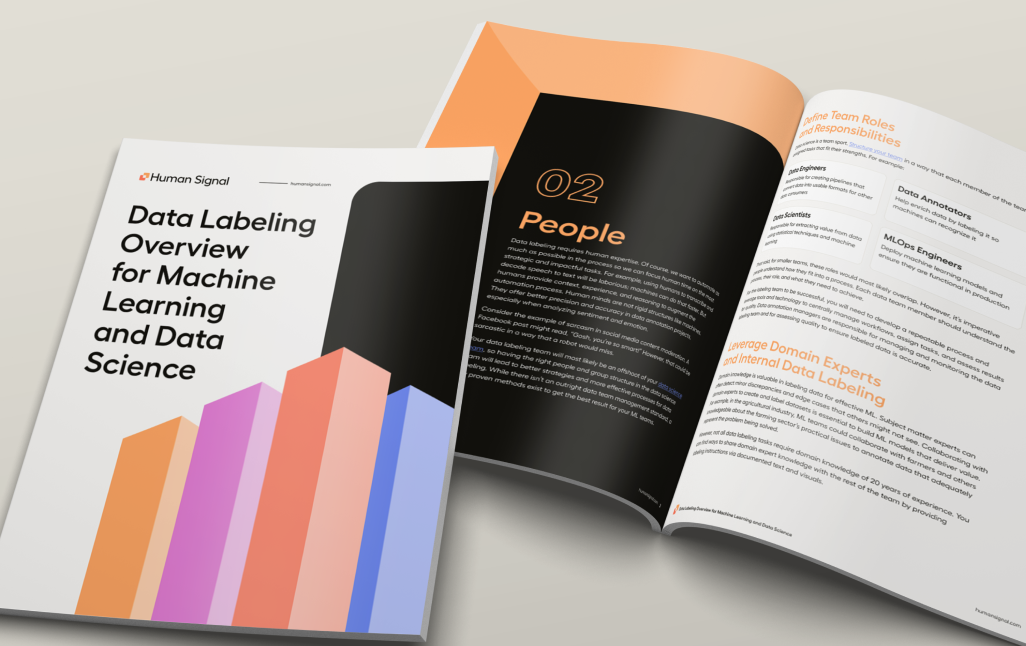Free guide
Data Labeling Overview for Machine Learning and Data Science
Learn the core aspects of data labeling — data, process, people, and technology and how to build a successful data labeling system.

Learn the core aspects of data labeling — data, process, people, and technology and how to build a successful data labeling system.

While data is critical for Al, raw data doesn't come with enough context to train a machine learning model. This knowledge leads teams to adopt a data-centric approach -focusing on the quality of data to produce better machine learning outcomes.
At the core of this data-centric approach is data labeling - a layer of metadata that connects raw data to the predictions your machine learning model is learning to make.